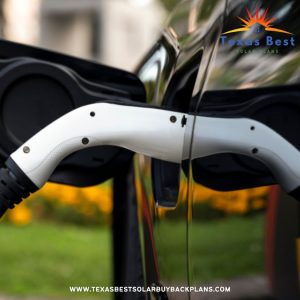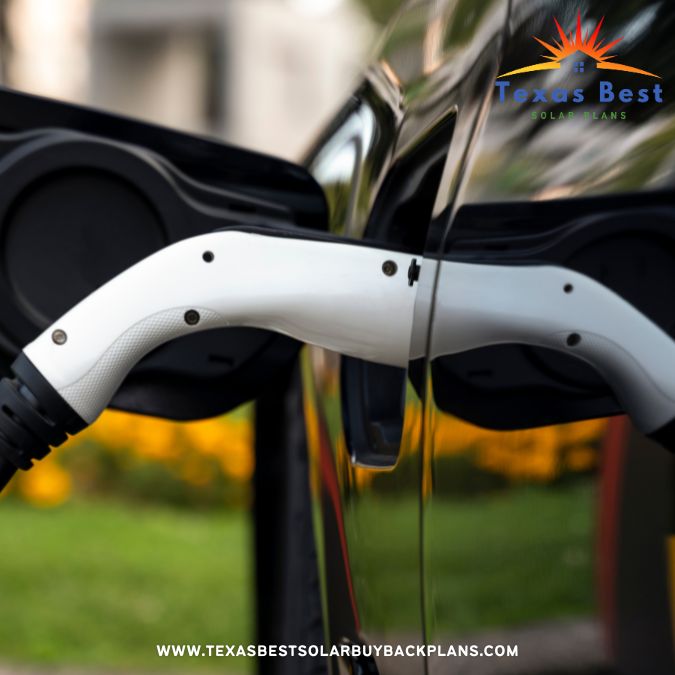- Tips and Tricks for Charging Your Electric Vehicle


Tips & Tricks for Charging Your Solar Vehicle in Texas
With the rise in electric vehicles (EVs) and solar-powered charging, it's important for Texans to know the best ways to efficiently charge their solar-powered cars and trucks. Whether you’re driving a solar-powered car or one of the increasingly popular electric trucks, understanding charging levels, timing, and best practices can help you save both time and money.
1. Know Your Charging Levels
When charging your solar vehicle, it’s essential to understand the differences between the three charging levels. Here's a breakdown:
Charging Level Power Source Charging Speed Best Use Level 1 Standard 120-volt outlet 2-5 miles of range per hour Home charging overnight Level 2 240-volt outlet (e.g., dryer) 10-60 miles of range per hour Home, work, public charging stations Level 3 (DC Fast Charging) 480 volts (or higher) 100+ miles of range in 30 minutes Long trips, quick top-ups on the go For trucks, which typically have larger batteries and higher energy needs, Level 2 and Level 3 charging are most practical for regular use. Level 1 can be helpful for an overnight charge if you're not in a hurry.
“For trucks with larger batteries, Level 2 or Level 3 charging is the way to go for efficiency.”
2. Charge During Peak Solar Production
If your home is equipped with a solar panel system, maximizing your solar energy is crucial. The peak solar production typically happens between 10 AM and 4 PM. Charging your vehicle during this period ensures you're making the most of the clean energy generated by your solar panels.
- Tip: If you have a solar battery storage system, you can charge your vehicle even when the sun isn't shining, reducing your reliance on the grid and saving money.
3. Monitor Electricity Rates and Incentives
In Texas, where electricity prices can vary widely, it’s smart to pay attention to time-of-use rates and incentives. Some utilities offer special EV charging rates during off-peak hours, which could further save you money. Make sure to pair this with your Texas Best Solar Buy Back Plan to optimize costs.
“Charging your vehicle during off-peak hours can lead to significant savings, especially when paired with the right solar buy-back plan.”
4. Optimize Your Charging Schedule
EV charging isn’t just about plugging in whenever possible. By scheduling your charges based on your driving habits and electricity rates, you can extend your vehicle’s battery life and save on your electricity bill. If you drive less frequently, you may not need to charge every day, which could extend the longevity of your EV’s battery.
5. Use a Smart EV Charger
Smart EV chargers allow you to monitor and control your charging sessions remotely. They can be programmed to charge during off-peak times or when solar production is at its peak. This makes charging more efficient, cost-effective, and environmentally friendly.
6. Leverage Public Charging Networks for Road Trips
For Texans with electric trucks, road trips can be a big part of life. The good news is that there are a growing number of public charging networks across Texas. Before heading out on a long trip, plan your route to include Level 3 DC Fast Charging stations. This will minimize downtime and keep your truck charged and ready for those long stretches of Texas highways.
7. Regularly Maintain Your Charging Equipment
To keep your charging equipment working efficiently, perform regular maintenance checks. Ensure that your cables are clean and free of damage, and make sure your charging port is in good condition. Proper maintenance can improve the efficiency of your charging and extend the lifespan of your charger.
8. Monitor Solar Output and Energy Usage
If your goal is to power your vehicle predominantly with solar energy, keep an eye on your solar production and energy consumption. Knowing how much solar energy you generate daily can help you plan when to charge and when to draw from the grid if necessary. Use monitoring systems provided by your solar installation to get accurate and real-time data.
9. Use Vehicle-to-Home (V2H) Technology
If your solar vehicle is compatible, consider using Vehicle-to-Home (V2H) technology. This allows your vehicle’s battery to power your home during peak hours or power outages, giving you another way to save money on your electricity bills and make the most of your solar energy.
10. Explore Incentives for Solar and EV Charging
There are various incentives for installing solar panels, battery storage, and EV charging equipment. Make sure to explore federal, state, and local rebates or tax credits that can help reduce the costs of your solar EV setup. For example, the Federal Solar Tax Credit can offset the cost of solar panel installation, while some utilities in Texas may provide rebates for EV charging equipment.
11. Consider Range and Weather Conditions
Texas weather can affect your EV’s range. Extreme heat, common in Texas summers, can reduce the efficiency of your battery. Charging your vehicle in a shaded area or garage can help maintain optimal battery performance. Plan your charging needs based on the weather, and adjust your driving habits to conserve energy during extreme temperatures.
Statistics to Know:
- Texas is one of the fastest-growing states for EV adoption, with a 24% increase in EV sales in 2023.
- A Level 2 charger can charge an average electric truck to full capacity in about 8-10 hours.
- Solar-powered EV owners can save up to 50% on their electricity bills when paired with Texas Solar BuyBack Plans.
By following these tips and tricks for charging your electric vehicle in Texas, you can efficiently charge your solar vehicle while maximizing your savings and minimizing your environmental impact. Texas Best Solar Plans is here to help you find the best solar buy-back plans to complement your EV lifestyle, ensuring you get the most out of every charge!

